One of the more challenging things we’ve had to learn was the planning process of our gardens.
We aren’t growing what some might refer to as a small “hobby garden.” We are growing a garden that will produce a significant amount of food for the purposes of fresh eating and longer term preservation.
We found that the transition from the hobby garden into serious family scale production required a great deal more planning.
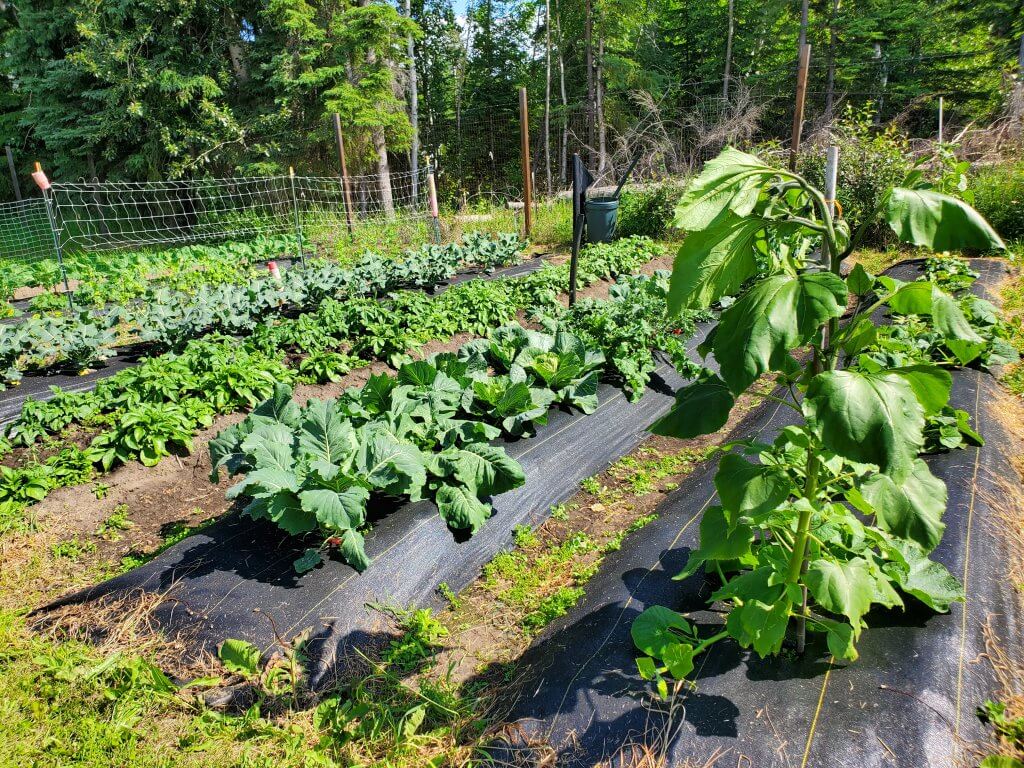
We garden over 2,000 square feet of space every year, significantly contributing to our total food consumption.
In this post, we talk about some of the techniques and tools we use to plan our garden so it can feed our family.
Since we grow almost entirely from seed, this process also helps us determine how many garden starts we need to raise.
Starting With The Basics Of Garden Planning!
We do recommend having a general plan for your garden every year. Having a good plan helps us immensely, across many different aspects of the garden and growing season.
We usually start our garden planning quite early. Usually in January, well into the depths of winter.
We have a few initial goals that we are trying to achieve in our garden planning processes:
- Get a physical garden plan together so we know what goes where
- Determine how many of each garden start we need to raise for the upcoming season
- Perform a seed inventory and order any seeds we might need
- Think about things like crop rotation and companion planting
- Integrate previously learned concepts or solutions into our garden
As a subarctic gardener, we have to remember that “the rest of the world” is well ahead of us in their gardening season. We’ve found it advantageous to start early, especially with our seed ordering.
If you want the best selection of seeds and the most time to think about your future garden, getting started early will benefit you.
A short two months later, we’ll be in the thick of growing. We’ll have lots of things going on, at different phases, and that’s when having a plan will really shine!
The Case For Having A Good Garden Plan
We can certainly appreciate the “willy nilly” approach to gardening. It’s a lot of fun do whatever you want, whenever you want.
As we’ve grown as gardeners, and taken on larger gardens, the case for having a good garden plan has been self evident.
- If you’re buying plants, it helps you not spend real money on plants you don’t have space for
- If you grow from seed, it helps you manage your indoor growing space and avoid an out of control jungle
- It saves you time, money and resources on growing plants that will just be composted
- It saves you a lot of stress. You know what and how you’re going to do in your garden every year.
- Enables you to take on larger and larger gardens with ease.
We can appreciate that creating a garden plan, especially as a beginner gardener, can be difficult to know how to do.
But it is something you can learn.
The overall process of gardening is like most other skills, though. It takes some preparation and effort to do well.
Basic Tools For Garden Planning
For many years, we used very basic tools for establishing our garden plans. Compared to what we do today, we’d almost consider them crude.
But, they worked. And they worked well!
In our earliest days of growing, we used good old fashioned pen and paper! Usually, graph paper. And sometimes actually a pencil.
This allowed us to easily draw out our gardens, roughly to scale.
Large scale graph paper allows for easier writing and layout of your garden beds. Here’s some links to printable graph paper, if you want it:
As technology became more prevalent, we moved our graph paper into spreadsheets. We created custom built spreadsheets that could be easily updated from season to season.
The spreadsheet’s cells would indicate what plants we wanted to grow and where. We could color code things, make notes easily and generally keep track of things.
Better yet, the next year’s plan was a simple copy and paste!
These techniques worked great for a small, hobby level garden. We weren’t tracking hundreds of plants and planting sites across thousands of square feet.
Today, things are a little different for us. So, we use better tools. On to that topic…
Using Online Tools For Basic Garden Planning
One of the most important aspects of planning is conceptualizing your garden. This is fundamental to determining how much you can grow in a given space.
We’ve tried everything from paper plans to spreadsheets.
What works the best for us these days is using an online planning tool. This isn’t an advertisement, but we use the GrowVeg.com website for all of our garden planning needs.
The garden planner from GrowVeg.com is resold through several other websites such as Farmer’s Almanac and several other sites. GrowVeg.com is the actual source of that software and the end product is all the same.
We support the OG creator (even though the product is designed to be re-sold) as we appreciate their change notices and their recent successful technical migration from Flash to HTML5.
What we love about this tool is it makes our garden planning extremely easy. We only need to spend about one to two hours a year to finalize our plans.
With this tool, we can easily drop in various plants that we want to grow. It accommodates our planting rows and intensive planting techniques that we use in our raised beds & gardens.
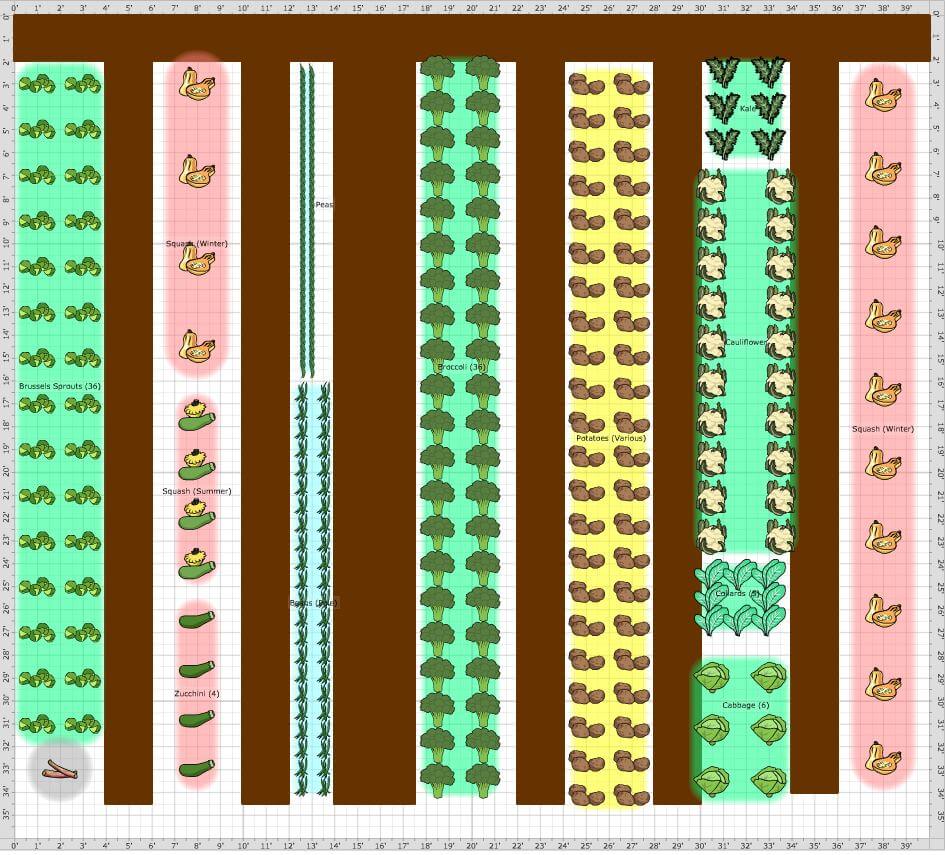
This was our 2020 garden plan for our community garden. We grow a lot of food in this plot, mostly larger vegetables that do well growing in the ground.
We are also able to model our container garden in the tool. This is helpful as we can again see our entire garden in a glance.
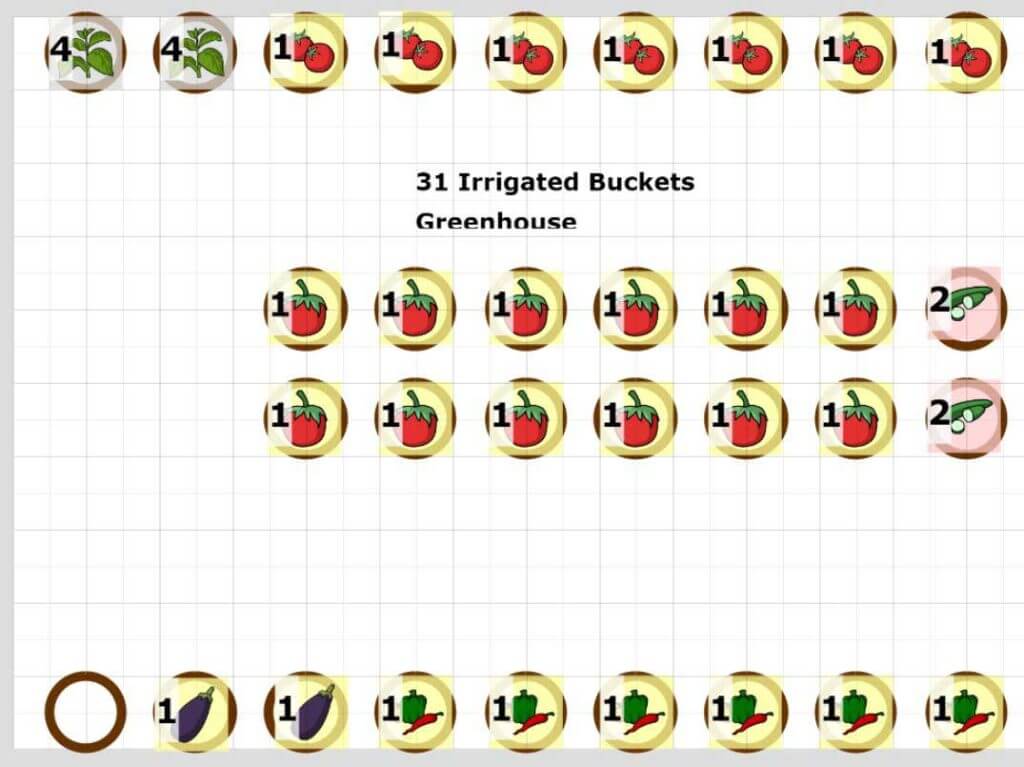
Above is an example of how we plan out some of our container gardens in our greenhouse. We don’t need anything complex for design, we’re just trying to get easy plant counts.
This tool automatically figures out basic plant spacing needs and basically acts as the primary plan for our garden.
The tool allows for flexible planting concepts. It supports row gardening and also intensive gardening techniques. You can also just plunk down plants wherever you want them.
It also helps you visualize the fully grown plant as well, which is super helpful for new gardeners.
This particular tool we recommend does cost money. (At this time, it’s $35 per year) We have used this tool for many years now and feel it is well worth the cost. It saves us so much time and makes things so much easier!
If your garden doesn’t support a subscription, the next best tool is to use an Excel (or Google Sheets) spreadsheet. You’ll have to figure a lot of things out, but it works.
The Real Reasons We Use An Online Garden Planner!
Where this online tool pays dividends is you can get an output of exactly how many plants of each type you need to grow, based on whatever you put into the plan.
There are also some bonus features like a planting schedule, but we find it less accurate for the subarctic.
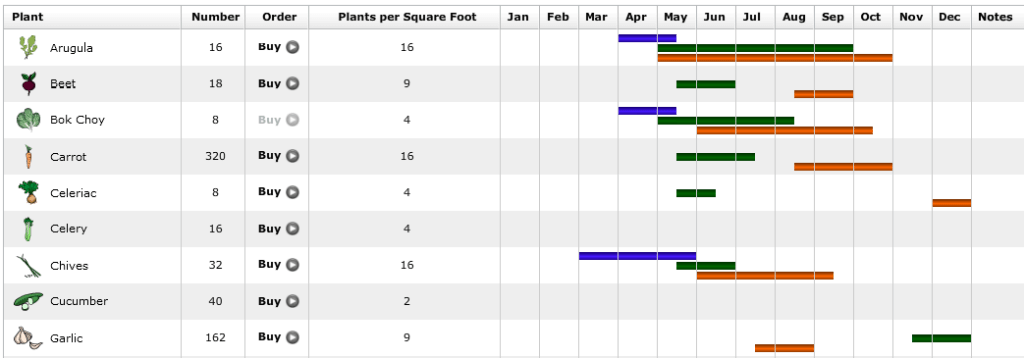 This is an example of the plant outputs you get. We have a nice output of exactly how many plants our plan needs, which helps immensely in our sowing processes.
This is an example of the plant outputs you get. We have a nice output of exactly how many plants our plan needs, which helps immensely in our sowing processes.
Another major time time saving technique this tool allows is simply copying our previous year’s plan. When you do this, the tool will visualize crop rotation requirements, making it really easy to avoid conflicts. This gets our planning effort ahead of the game in mere seconds.
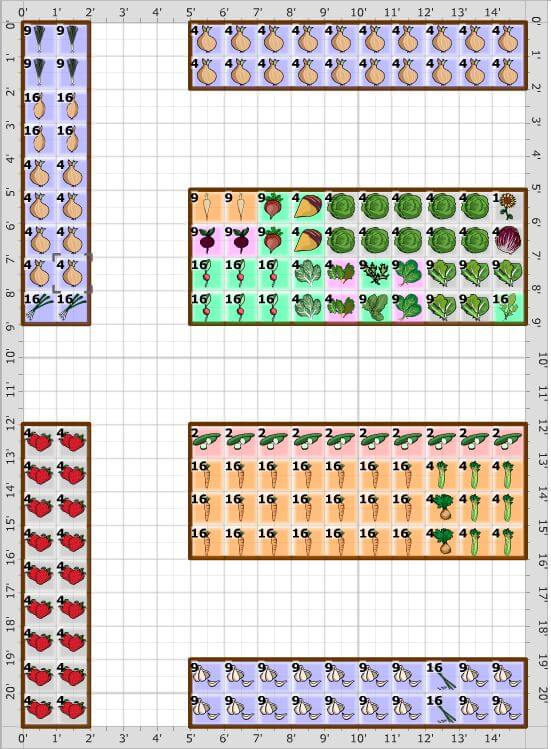 One of our favorite things about the tool is it allows you to very quickly look at “what if” scenarios. This is especially nice in planning new gardens.
One of our favorite things about the tool is it allows you to very quickly look at “what if” scenarios. This is especially nice in planning new gardens.
We used this tool to model our raised bed layout, prior to building it. This allowed us to get a pretty good idea of how much space we’d actually need to grow what we wanted in that space.
So, with that, we basically have our entire garden’s layout, how many plant’s we’re going to need to raise and can start with other planning basics.
How We Manage Our Seed Bank
Let’s briefly talk about how we organize our seeds. We did the whole shoebox thing for years.
We upgraded to something different and it is totally worth sharing with our readers! This has been probably one of the more life changing things we’ve purchased for our garden.
We bought a photo organizer to help us manage our seed bank. This thing is absolutely perfect. We can keep a ton of seed packets super well organized.
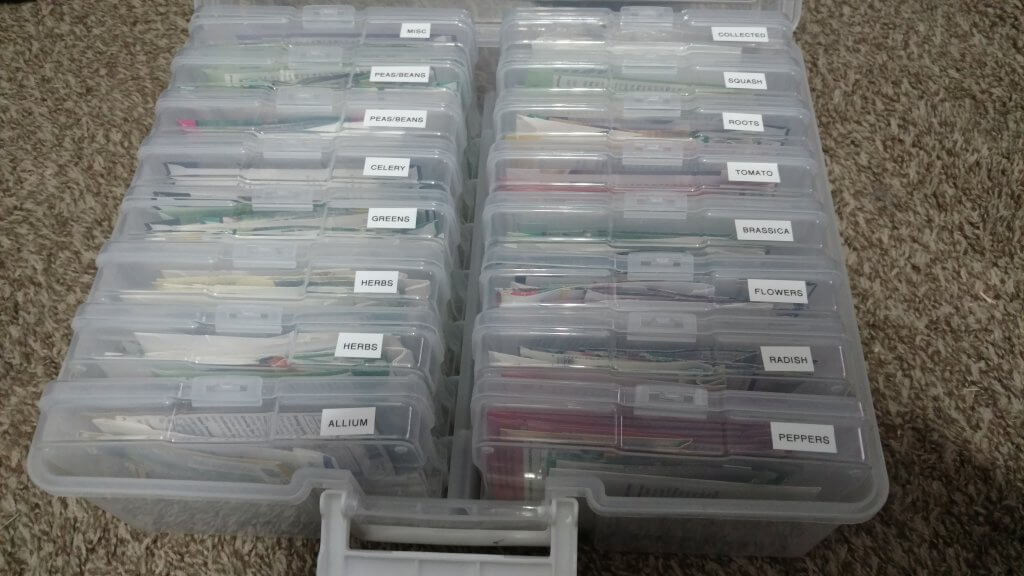
This is our current method of organizing our seed bank. Photo organizers can be had relatively inexpensively and are great for organizing plant seeds.
You might be asking, “What does this have to do with garden planning?”
Well, knowing what seeds you all ready have and what you need is very important! When we put this organizer together, we found so many duplicates of seeds, it wasn’t even funny!
Where this storage method really helps is when we’re putting together our seed order. We can easily find the genetics we have and determine if we are missing anything. Most importantly, it helps us avoid buying seeds we don’t need.
Another helpful technique we use is we write the purchase year on every single seed packet, as soon as we receive them. While most seeds can last a long time, many seeds have a shelf life that you need to pay attention to.
We also put together little “cheat sheets” on seed viability. These are little paper inserts we put in each organizer with the types of seeds and expected longevity. This helps us “clean out” old seeds and re-purchase when they are needed.
Getting Your Seed Order Together
Now that you have an idea of what you’re going to plant and the seeds that you may need, you can start putting a seed order together.
Danger! You’re in the danger zone now!
Seed catalogs and online websites are designed to sell seeds. There are going to be hundreds of beautiful pictures of amazing and interesting plants. You are going to want to buy all of them!
We recommend going into your seed order with a plan.
Have an idea of what you need, and how many varieties your garden can realistically support. Otherwise, you’re going to have to figure out how to grow 16 different kinds of celery (or, whatever!) and that will likely cause some issues.
While we too “give in” a many times, we try to keep to our basic needs as much as possible. It’s a good idea to minimize seed varieties and balance those desires over multiple years.
Every year is going to be like this!
Take Notes Throughout The Season
One of the most valuable things we can tell you is to keep a bit of a “journal” going through the season.
We use a “master spreadsheet” that has a ton of information we’ve collected over the years. One of the most important things it includes is various little notes that we write to ourselves for the next year.
The winter months are seemingly long and we often forget the specifics that we were dealing with the prior season. This journal helps us keep on track and remember those important things.
The biggest things we like to track are:
- When we run out (or get low) of a particular kind of seed
- If we see low germination of seeds, indicating need for replacement
- Major changes we’d like to make to methods, techniques or plant quantities the following year
- If we learn something new and want to try it the following year
- When we find a new variety that we want to remember the next year
- Changes to our seed schedule that might be desired, such as starting things later or earlier
- If we decide we don’t want to grow something again for whatever reason
We also have a section for “perpetual notes” that remind us of important things we tend to forget or things important to remember.
One of the first things we check, before we do any seed orders, are our notes from the prior year. This helps us build our seed list from the previous season’s needs.
Establishing A Plan Gets Easier Over The Years
We found garden planning a bit intimidating when we first dove into more serious levels of home gardening. It’s OK, that’s totally normal.
We can tell you that it gets easier over time.
After a few years, you start to get the hang of it. You understand your gardening space better. Through experience, you figure out what you want and what you don’t want. You learn what you use more of and what you use less of.
Just remember, you don’t have to get things perfectly right your very first year. Or your second, or third year. In fact, if you’re like us, you will change things every year!
We hope this helps you get a better handle on planning your gardens!
That’s All We Wrote!

Having a good time? We have an ever growing list of insightful and helpful subarctic & cold climate gardening articles, waiting out there for you!
- Cold Climate Gardening Basics 👉
- Growing Your Garden From Seed Indoors 👉
- Advanced Cold Climate Gardening Techniques 👉
- Plant Specific Cold Climate Growing Guides 👉
- Subarctic Perennial Food Forests & Foraging 👉
- Indoor Garden Lighting & Grow Rooms 👉
- Greenhouses & Temperature Control 👉
- Harvesting & Food Preservation 👉
- Solving Cold Climate Garden Problems 👉
- 1 Minute Reads On Tons Of Garden Topics 👉
FrostyGarden.com is 100% ad-free and we do not use affiliate links! This resource is voluntarily supported by our readers. (Like YOU!) If we provided you value, would you consider supporting us?

thanks for the garden tool planner idea. I’ll have to check them out. I am planning on trying dahlias this year (in bulk!). they are all so beautiful and I could not resist but it will be good to plan out there placement in the garden plot.